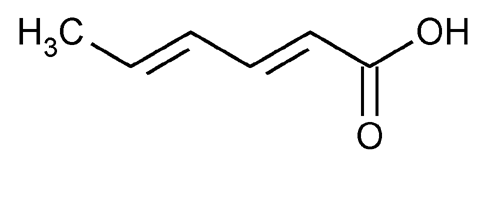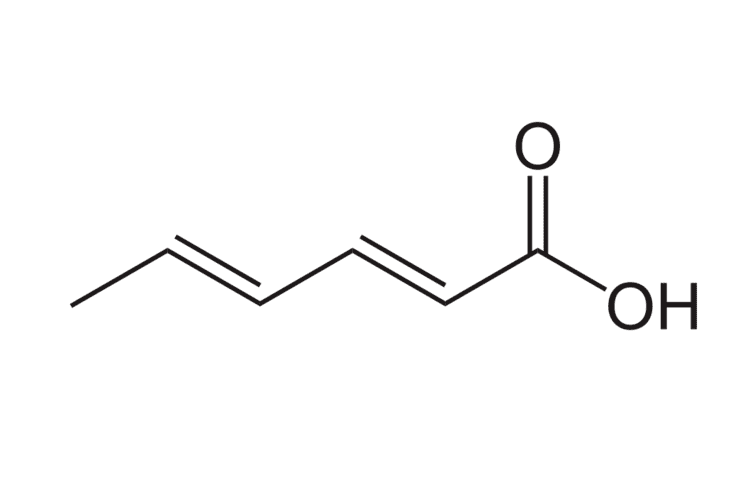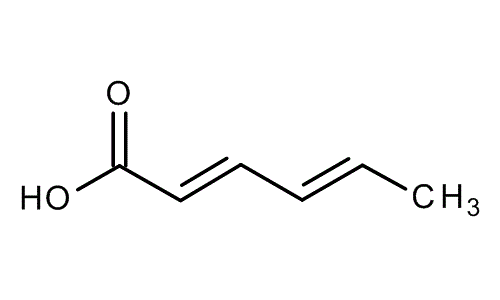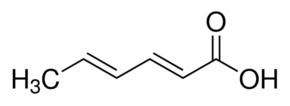Formula C6H8O2 | Boiling point 228 °C | |
 | ||
Sorbic acid
Sorbic acid, or 2,4-hexadienoic acid, is a natural organic compound used as a food preservative. It has the chemical formula C6H8O2. It is a colourless solid that is slightly soluble in water and sublimes readily. It was first isolated from the unripe berries of the rowan tree (Sorbus aucuparia), hence its name.
Contents

Sorbic acid
Production

The traditional route to sorbic acid involves condensation of malonic acid and trans-butenal. It can also be prepared from isomeric hexadienoic acids, which are available via a nickel-catalyzed reaction of allyl chloride, acetylene, and carbon monoxide. The route used commercially, however, is from crotonaldehyde and ketene. An estimated 30,000 tons are produced annually.
History

Sorbic acid was isolated in 1859 by distillation of rowanberry oil by A. W. von Hofmann. This affords the lactone of sorbic acid, which he converted to sorbic acid by hydrolysis. Its antimicrobial activities were discovered in the late 1930s and 1940s, and it became commercially available in the late 1940s and 1950s. Beginning in the 1980s, sorbic acid and its salts were used as inhibitors of Clostridium botulinum in meat products to replace the use of nitrites, which can produce carcinogenic nitrosamines.
Properties and uses
With a pKa of 4.76, it is about as acidic as acetic acid.

Sorbic acid and its salts, such as sodium sorbate, potassium sorbate, and calcium sorbate, are antimicrobial agents often used as preservatives in food and drinks to prevent the growth of mold, yeast, and fungi. In general the salts are preferred over the acid form because they are more soluble in water, but the active form is the acid. The optimal pH for the antimicrobial activity is below pH 6.5. Sorbates are generally used at concentrations of 0.025% to 0.10%. Adding sorbate salts to food will, however, raise the pH of the food slightly so the pH may need to be adjusted to assure safety. It is found in many other foods, such as cheeses and breads.
The E numbers are:
Some molds (notably some Trichoderma and Penicillium strains) and yeasts are able to detoxify sorbates by decarboxylation, producing trans-1,3-pentadiene. The pentadiene manifests as a typical odor of kerosene or petroleum. Other detoxification reactions include reduction to 4-hexenol and 4-hexenoic acid.

Sorbic acid can also be used as an additive for cold rubber, and as an intermediate in the manufacture of some plasticizers and lubricants.
Safety

The LD50 value of sorbic acid is estimated to be between 7.4 and 10 g/kg, which is quite high. The compound is relatively unstable and is rapidly degraded in soil, hence it is often considered environmentally friendly.

